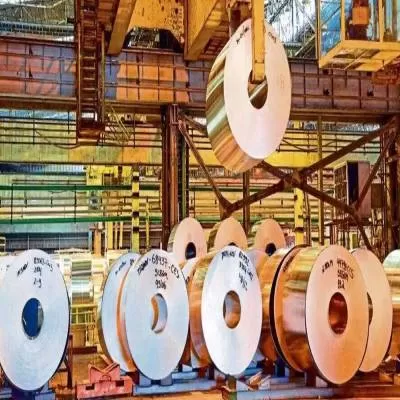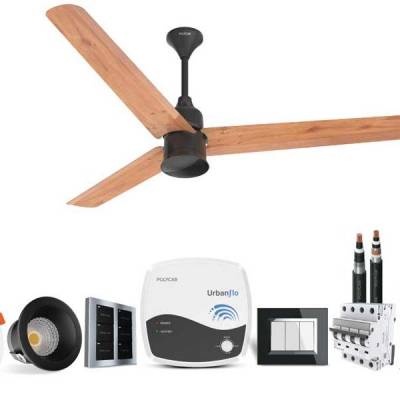- Home
- Real Estate
- Strong and ultra-light aluminium composite with carbon nanotubes
Strong and ultra-light aluminium composite with carbon nanotubes
The ability to enhance aluminium with nanomaterials, thus increasing their strength and reducing their weight, was originally thought to be unattainable technology. However, Professor Hansang Kwon from Pukyong National University in South Korea has recently developed economically viable breakthrough technology for reinforcing metal matrix composites with single wall carbon nanotubes.
For this new composite material, Prof Kwon used Tuball nanotubes produced by OCSiAl. He uniformly dispersed the nanotubes in aluminium, using a grinding and mixing technique to get the raw materials down to the nano scale. Tests have revealed that, compared with conventional aluminium, the composite obtained has a tensile strength four times higher and a hardness 20 times higher.
One of the primary applications of this nano-augmented aluminium is in high-voltage electricity cables. “The existing approach in reinforcing aluminium high-voltage electricity cables is to insert a steel cable inside of it. This dramatically increases the cable’s weight and leads to additional effort and requirements in the installation of transmission towers. Our new technology enables the number of transmission towers to be reduced, lowers the environmental damage and cuts costs,” said Professor Hansang Kwon from Pukyong National University in South Korea. The technology has already been acquired by the Korean company Total Aluminum Service, which plans to apply it in the production of high-voltage electricity cables and wires for electric vehicles.
“The carbon nanotube-aluminium composite cable has sufficient tensile strength and weighs only one-third that of the copper used in general cables,” added Prof Kwon. The possibility to reduce the weight of metal by introducing nanotubes is blazing a trial for this technology to boost its use in mainstream engineering, such as aviation, automotive, electronics and energy. For instance, by applying single wall carbon nanotubes, Prof. Kwon has also been able to reduce the weight and prolong the cycle life of steel cylinders.
Reinforcing metal composites with single wall carbon nanotubes is pushing the boundaries of metal composite applications and meets all the requirements for genuine mass technology, including simplicity of processing and economic viability. Prof. Kwon has also already obtained promising results in replacing LED and HID lighting with carbon nanotube-containing metal-ceramic for rechargeable laser lighting.
A range of astonishing qualities of single wall carbon nanotubes contribute to the competitive advantages of nanotube-formulated metal composites in terms of their enhanced strength, improved performance and increased cycle life. Nano-augmented metal composites have proven their economic viability and will appear in the market soon. The ability to enhance aluminium with nanomaterials, thus increasing their strength and reducing their weight, was originally thought to be unattainable technology. However, Professor Hansang Kwon from Pukyong National University in South Korea has recently developed economically viable breakthrough technology for reinforcing metal matrix composites with single wall carbon nanotubes. For this new composite material, Prof Kwon used Tuball nanotubes produced by OCSiAl. He uniformly dispersed the nanotubes in aluminium, using a grinding and mixing technique to get the raw materials down to the nano scale. Tests have revealed that, compared with conventional aluminium, the composite obtained has a tensile strength four times higher and a hardness 20 times higher. One of the primary applications of this nano-augmented aluminium is in high-voltage electricity cables. “The existing approach in reinforcing aluminium high-voltage electricity cables is to insert a steel cable inside of it. This dramatically increases the cable’s weight and leads to additional effort and requirements in the installation of transmission towers. Our new technology enables the number of transmission towers to be reduced, lowers the environmental damage and cuts costs,” said Professor Hansang Kwon from Pukyong National University in South Korea. The technology has already been acquired by the Korean company Total Aluminum Service, which plans to apply it in the production of high-voltage electricity cables and wires for electric vehicles. “The carbon nanotube-aluminium composite cable has sufficient tensile strength and weighs only one-third that of the copper used in general cables,” added Prof Kwon. The possibility to reduce the weight of metal by introducing nanotubes is blazing a trial for this technology to boost its use in mainstream engineering, such as aviation, automotive, electronics and energy. For instance, by applying single wall carbon nanotubes, Prof. Kwon has also been able to reduce the weight and prolong the cycle life of steel cylinders. Reinforcing metal composites with single wall carbon nanotubes is pushing the boundaries of metal composite applications and meets all the requirements for genuine mass technology, including simplicity of processing and economic viability. Prof. Kwon has also already obtained promising results in replacing LED and HID lighting with carbon nanotube-containing metal-ceramic for rechargeable laser lighting.
























